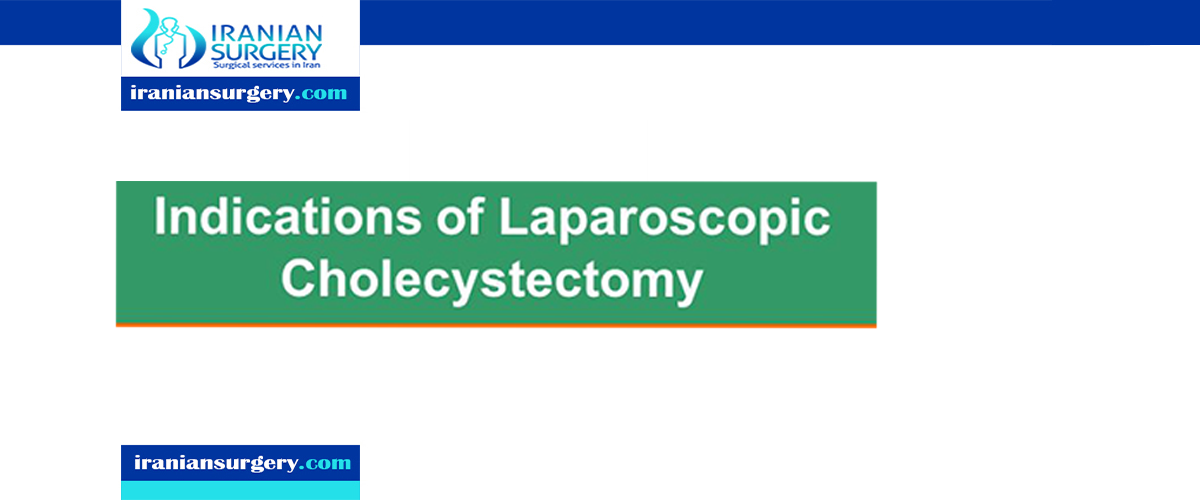Cholecystectomy indications

What are the indications for cholecystectomy?
Why would a person need to have their gallbladder removed?
Does cholecystitis require surgery?
What are the signs and symptoms of cholecystitis?
A cholecystectomy may be done if your gallbladder:
- Has lumps of solid material (gallstones)
- Is red or swollen (inflamed), or infected (cholecystitis)
- Is cancerous
Read more about : Diet after gallbladder surgery
Gallbladder problems may cause pain which:
- Is usually on the right side or middle of your upper belly
- May be constant or may get worse after a heavy meal
- May sometimes feel more like fullness than pain
- May be felt in your back and in the tip of your right shoulder blade
Other symptoms may include nausea, vomiting, fever, and chills.
The symptoms of gallbladder problems may look like other health problems. Always see your healthcare provider to be sure.
Your healthcare provider may have other reasons to recommend a cholecystectomy.
Signs and symptoms of cholecystitis may include:
- Severe pain in your upper right or center abdomen
- Pain that spreads to your right shoulder or back
- Tenderness over your abdomen when it's touched
- Nausea
- Vomiting
- Fever
Read more about : Laparoscopic Cholecystectomy
Read more about : Stomach Cancer Treatment
Read more about: What Causes Gallbladder Problems?
What are the indications for cholecystectomy?
Cholecystectomy is indicated in the presence of gallbladder trauma, gallbladder cancer, acute cholecystitis, and other complications of gallstones. More controversial are the indications for elective cholecystectomy. To properly determine the indications for elective cholecystectomy, the risk of the operation (taking into account the age and comorbid factors of the individual patient) must be weighed against the risk of complications and death without operation (taking into account the symptomatic status of the individual and the functional status of the gallbladder). Cholecystectomy (or some other form of gallstone therapy) is indicated in most patients with symptomatic cholelithiasis--especially those with non-functioning gallbladders. Cholecystectomy is not indicated in most patients with asymptomatic stones.
Read more about: cholecystectomy in Iran
Why would a person need to have their gallbladder removed?
Unfortunately, the gallbladder isn’t always the most efficient organ. Bile can be thick and create blockages along the pathway where it typically empties. The gallbladder is also prone to develop gallstones in certain people.
Gallstones are hard deposits of substances in the bile that can get stuck inside the gallbladder and biliary ducts. They can be as small as a grain of sand or as large as a golf ball. Gallstones can also lead to acute or chronic gallbladder inflammation, sometimes with an associated infection, which can cause:
- bloating
- nausea
- vomiting
- further pain
A surgeon will remove your gallbladder if gallstones cause significant pain and other complications.
Other conditions that could make you a candidate for gallbladder removal include:
- Biliary dyskinesia. This occurs when the gallbladder doesn’t empty bile correctly due to a defect in its motion.
- Choledocholithiasis. This happens when gallstones have moved to the common bile duct where they may be stuck, causing a blockage that doesn’t allow the gallbladder or rest of the biliary tree to drain.
- Cholecystitis. This is inflammation of the gallbladder.
- Pancreatitis. This is inflammation of the pancreas.
A doctor will recommend gallbladder removal if your gallbladder is causing a severe, acute problem or has become a chronic concern. Some symptoms that may indicate the need for gallbladder removal include:
- sharp pain in the right upper portion of your abdomen that can radiate to the middle of your abdomen, right shoulder, or back
- fever
- nausea
- bloating
- jaundice, or yellowing of your skin, which typically indicates a bile duct blockage when due to biliary disease.
Read more about: Which tool is used for laparoscopic cholecystectomy?
Does cholecystitis require surgery?
Treatment for cholecystitis usually involves a hospital stay to control the inflammation in your gallbladder. Sometimes, surgery is needed.
At the hospital, your doctor will work to control your signs and symptoms. Treatments may include:
- Fasting. You may not be allowed to eat or drink at first in order to take stress off your inflamed gallbladder.
- Fluids through a vein in your arm. This treatment helps prevent dehydration.
- Antibiotics to fight infection. If your gallbladder is infected, your doctor likely will recommend antibiotics.
- Pain medications. These can help control pain until the inflammation in your gallbladder is relieved.
- Procedure to remove stones. Your doctor may perform a procedure called endoscopic retrograde cholangiopancreatography (ERCP) to remove any stones blocking the bile ducts or cystic duct.
Your symptoms are likely to decrease in two or three days. However, gallbladder inflammation often returns. Most people with the condition eventually need surgery to remove the gallbladder.
Gallbladder removal surgery is called a cholecystectomy. Usually, this is a minimally invasive procedure, involving a few tiny incisions in your abdomen (laparoscopic cholecystectomy). An open procedure, in which a long incision is made in your abdomen, is rarely required.
The timing of surgery depends on the severity of your symptoms and your overall risk of problems during and after surgery. If you're at low surgical risk, surgery may be performed within 48 hours or during your hospital stay.
Once your gallbladder is removed, bile flows directly from your liver into your small intestine, rather than being stored in your gallbladder. You don't need your gallbladder to live normally.
Read more about: Laparoscopy
Read more about: What is the most common treatment for gallstones?

